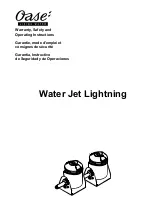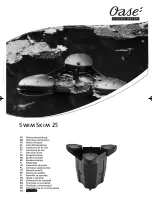
Use in Hazardous Environments • 183
Classification
meeting CENELEC and IEC
WAGO-I/O-SYSTEM 750
CANopen
The following table represents the division and attributes of the materials to
the temperature classes and material groups in percent:
Temperature classes
T1 T2 T3 T4 T5 T6 Total
*
26.6 %
42.8 %
25.5 %
94.9 %
4.9 %
0 %
0.2 %
432
Explosion group
IIA
IIB
IIC
Total
*
85.2 %
13.8 %
1.0 %
501
*
Number of classified materials
6.3.5 Types of ignition protection
Ignition protection defines the special measures to be taken for electrical com-
ponents in order to prevent the ignition of surrounding explosive atmospheres.
For this reason a differentiation is made between the following types of igni-
tion protection:
Identifi-
cation
CENELEC stan-
dard
IEC stan-
dard
Explanation
Application
EEx o
EN 50 015
IEC 79-6
Oil encapsulation
Zone 1 + 2
EEx p
EN 50 016
IEC 79-2
Overpressure encapsu-
lation
Zone 1 + 2
EEx q
EN 50 017
IEC 79-5
Sand encapsulation
Zone 1 + 2
EEx d
EN 50 018
IEC 79-1
Pressure resistant
encapsulation
Zone 1 + 2
EEx e
EN 50 019
IEC 79-7
Increased safety
Zone 1 + 2
EEx m
EN 50 028
IEC 79-18
Cast encapsulation
Zone 1 + 2
EEx i
EN 50 020 (unit)
EN 50 039 (system)
IEC 79-11
Intrinsic safety
Zone 0 + 1 + 2
EEx n
EN 50 021
IEC 79-15
Electrical components
for zone 2 (see below)
Zone 2
Ignition protection “n" describes exclusively the use of explosion protected
electrical components in zone 2. This zone encompasses areas where explo-
sive atmospheres can only be expected to occur rarely or short-term. It repre-
sents the transition between the area of zone 1, which requires an explosion
protection and safe area in which for instance welding is allowed at any time.
Regulations covering these electrical components are being prepared on a
world-wide scale. The standard EN 50 021 allows electrical component manu-
facturers to obtain certificates from the corresponding authorities for instance
KEMA in the Netherlands or the PTB in Germany, certifying that the tested
components meet the above mentioned standards draft.










































